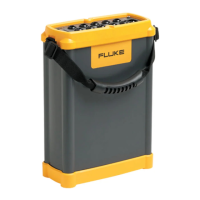1750
Getting Started Guide
14
If more than one Recorder is within range, these will appear in the drop
down menu list.
6. If you have previously established password protection for the Recorder,
you must type the correct password in the Password text box and click
OK. (Password protection is established for a specific Recorder using
either the Setup Password menu in Power View or the Power Analyze
software).
Connecting the Recorder to the Wiring
After you have set up the Recorder you are ready to connect the voltage leads
and current probe or flexi-probes to the power network being tested. Refer to
the Power Type diagrams provided on the PDA or in this manual.
Warning
To prevent possible electrical shock, Flexi-probes should
not be applied or removed from hazardous live
conductors.
In most cases, you should install the current probes first. Because they are
clamped around wires, current probes are usually more secure than voltage
probes. Examine the conductors you are about to connect to and determine if
you should attach the current probes to the phase wires or busbars before you
connect the voltage probes.
1. Select and attach the appropriate current probes to the Recorder.
2. Select and attach the appropriate voltage test leads and probes to the
Recorder.
Note
If your power connections require potential transformers (PTs) or
current transformers (CTs), you can use the ratio settings in Power
View to set the Recorder to display readings as they exist on the
primary side of the PT and CT (for example, 12000 V).
3. Connect the Recorder to the wiring by first connecting the measurement
ground test lead to the distribution system ground, and then the neutral
probe to neutral.

